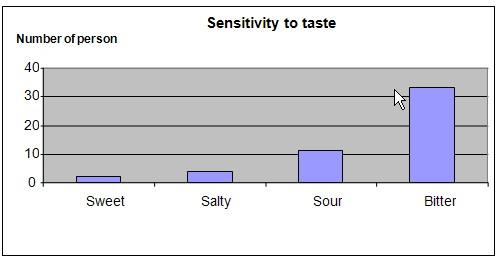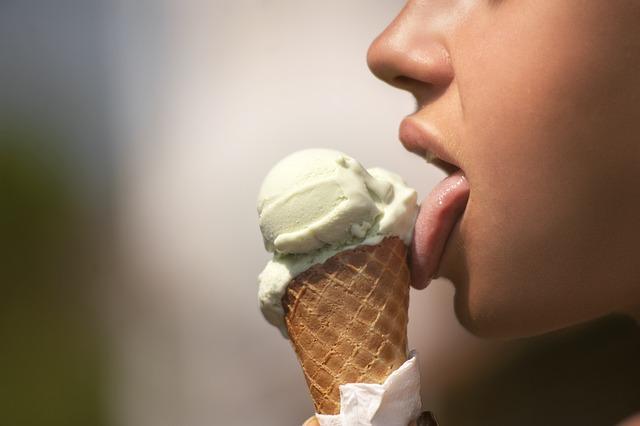| Complexity level: | 4 |
| Project cost ($): | 20 |
| Time required: | It will take 3 hours to set up the experiment, and 4 hours to conduct it |
| Material availability: | The materials required for this science project can be purchased at a supermarket. |
| Safety concerns: | Basic safety requirements |
Hypothesis
This science fair project was performed to investigate tongue sensitivity: to which type of taste (bitter, sour, salty or sweet) is the tongue most sensitive? Participants were given salt, sugar, lime juice and bitter chocolates.
Participants will taste the lime juice more acutely than the other food samples. The tongue is the most sensitive to sourness.
Overview
Sense of taste
The sense of taste is one of the five senses that human beings possess. Taste buds are located in the tongue. Through the tongue, we are able to appreciate various flavors and tastes in food. The 4 basic types of taste are sweet, sour, salty and bitter. Different parts of the tongue have different types of taste (refer to the diagram below). When we eat, electric signals are generated in the tongue. This electric signal is sent out to the brain via our nerves, causing us to sense a particular type of taste.
The sensitivity of taste is the intensity at which a person is able to perceive the flavor and taste of food. This intensity differs across individuals. For example, a person with high sensitivity of taste will be able to separate and identify the different tastes and flavors that are found in a mixed cocktail.

Scientific Terms
Materials
The materials required for this science fair project are as follows:
- 50 participants (be sure to engage participants of different genders and ages)
- 50 plastic spoons
- 50 blindfolds
- 1 kg salt
- 1 kg sugar
- 50 limes
- 1 kg bitter chocolate (without sugar)
- a knife
Procedure
1. For this science fair project, the independent variable is the type of food given to participants (sugar, salt, lime juice and bitter chocolate). Each participant is to tell the tester which food he/she tastes most acutely. These choices are the dependent variable. The constants (control variables) are the amount of food the participants are given and the number of participants.
2. 50 participants are engaged. Select participants from both genders, and from different ages.
3. The participants are tested one at a time. The first participant is blindfolded. This is because we don't want them to know what they will taste.
4. The participant is first given a spoon of sugar. He is to rinse his mouth to get rid of the taste.
5. Next, the participant is given a spoon of salt. After tasting the salt, he/she is asked which sample tasted more acutel\. Have the participant rinse his mouth again.
6. The lime is to be cut into half and squeezed. The participant is given the lime juice on a spoon Which sample is tasted the most acutely? Again, have the participant rinse his mouth.
7. Finally the participant is given a spoon of bitter chocolate. After tasting the bitter chocolate, he is asked which sample tasted the most acute. Record his choice in the table below.
8. Procedures number 3, 4, 5, 6 and 7 are repeated with the remaining 49 participants. Their choices are tabulated and recorded in the table below.


Results
Most participants tasted the bitter chocolate the most acutely.
|
Food sample |
Sugar |
Salt |
Lime juice |
Bitter chocolate |
|
Taste |
Sweet |
Salty |
Sour |
Bitter |
|
Number of participants who tasted this sample the most acutely |
2 |
4 |
11 |
33 |
The chart below represents the results of our experiment.
Conclusion
The hypothesis is proven to be false: participants tasted the bitter chocolates more acutely than the other foods. The tongue is the most sensitive to bitterness.
Tongue sensitivity is not the same for everybody. It depends on the number of taste receptors a person has and the number of taste buds in his/her tongue. Taste, however, is not confined to the sensation of the tongue. The smell, texture, color and temperature of the food also contribute its flavor and taste.
Also consider
Use different types of foods.
Heat up the foods. Will the test results change?
References
Taste - http://en.wikipedia.org/wiki/Taste
How temperature influences our taste - http://www.medicalnewstoday.com/articles/35142.php

